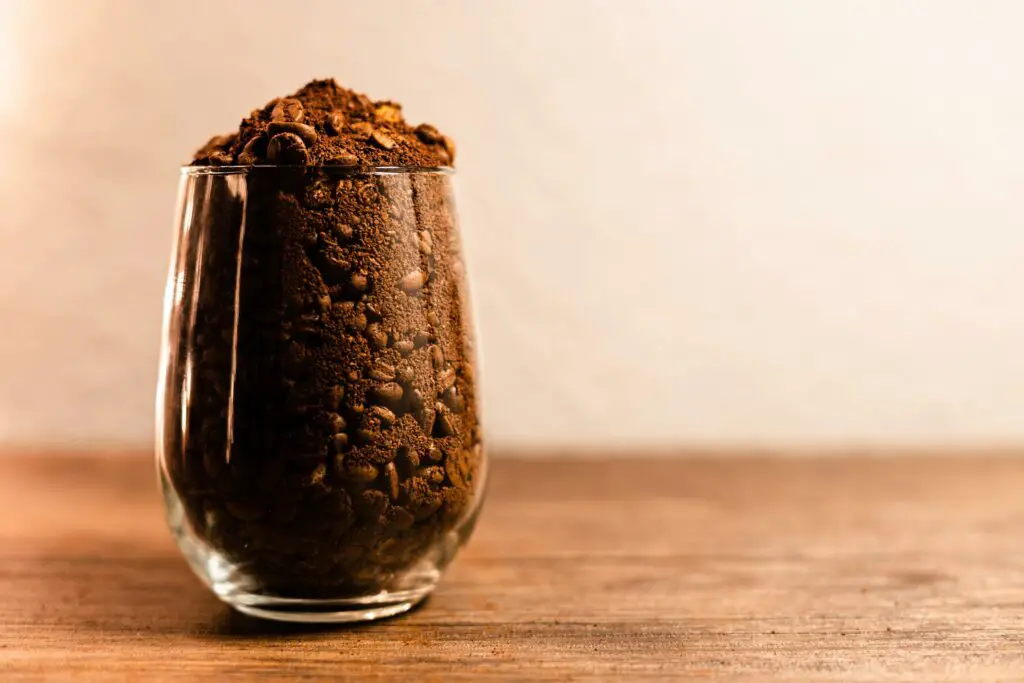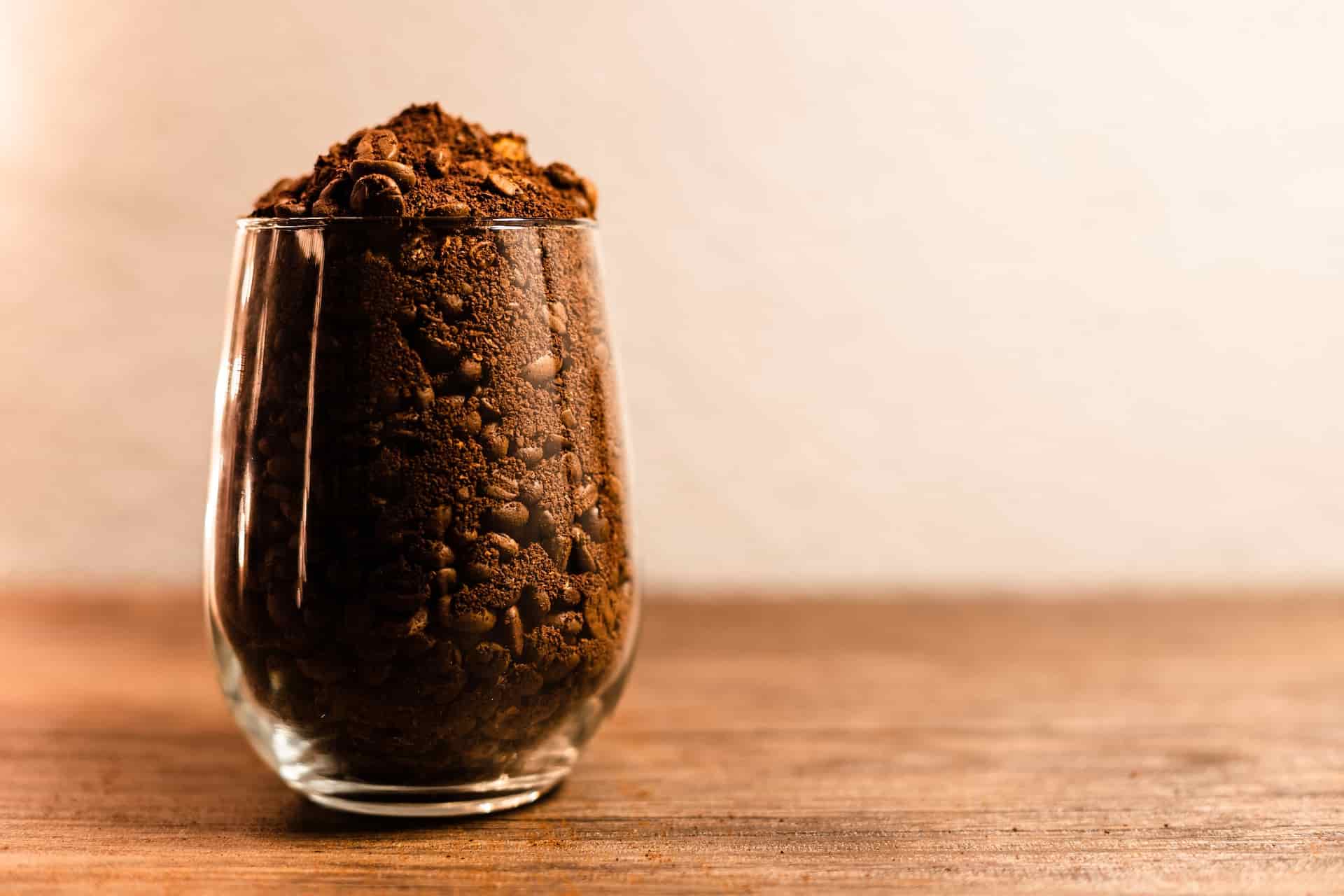Coffee lovers often find themselves wondering what to do with the leftover coffee grounds.
One of the questions that frequently come up is whether or not coffee grounds can be reused for cold brew.
Yes, you can reuse coffee grounds for cold brew, but the resulting cold brew may not be as flavorful or robust as the first batch.
It is recommended to use fresh coffee grounds for the best flavor, but reusing coffee grounds can be a cost-effective and sustainable option.
Cold brew coffee has gained popularity in recent years due to its smooth and rich flavor.
It is a perfect drink to have during hot summer days, and it is also a great option for people who prefer less acidic coffee.
But, can you reuse coffee grounds for cold brew?
In this blog post, we will explore this question and provide you with everything you need to know about reusing coffee grounds for cold brew.

Why People Love Drinking Cold Brew
Cold brew coffee has become increasingly popular among coffee drinkers in recent years.
One of the reasons for this is its smooth and rich taste.
The cold brew process involves steeping coffee grounds in cold water for an extended period of time, typically 12-24 hours.
This slow process extracts the coffee’s natural oils and flavors, resulting in a less acidic and less bitter taste compared to traditional hot brewed coffee.
Another reason why people love cold brew is its versatility.
It can be enjoyed on its own, over ice, or mixed with milk or other flavors to create a delicious and refreshing beverage.
A cold brew is also a great option for those who are sensitive to the high acidity in traditional hot brewed coffee.
It’s easy to make and can be stored in the refrigerator for up to a week, making it a convenient and cost-effective option for coffee lovers.
Furthermore, cold brew is incredibly versatile in terms of how it can be used in recipes.
It can be used as a base for cocktails, blended with ice and flavors for a tasty smoothie, or even used in baking to add a unique coffee flavor to desserts.
Its smooth and rich taste makes it a great substitute for traditional hot brewed coffee in a variety of recipes.
Overall, cold brew coffee’s popularity can be attributed to its delicious taste, versatility, and convenience. It’s no wonder that it has become a beloved beverage among coffee lovers all over the world.
Making A Delicious Cold Brew
Here’s a guide on how to make a delicious cold brew coffee:

- Gather your materials:
- Coarsely ground coffee beans
- Filtered water
- Large jar or pitcher
- Fine mesh strainer or cheesecloth
- Optional: Flavorings such as cinnamon sticks, vanilla extract, or cocoa powder
- Measure and grind your coffee beans:
- Measure out your desired amount of coffee grounds (a general rule of thumb is a 1:4 coffee-to-water ratio).
- Grind the coffee beans in a coarse setting.
- Mix the coffee and water:
- Add the coffee grounds to the jar or pitcher.
- Pour the filtered water over the coffee grounds.
- Stir until the grounds are fully saturated.
- Steep the coffee:
- Cover the jar or pitcher and place it in the refrigerator.
- Allow the coffee to steep for 12-24 hours (depending on how strong you like your coffee).
- Strain the coffee:
- Once the coffee has finished steeping, use a fine mesh strainer or cheesecloth to strain out the coffee grounds.
- If desired, strain the coffee a second time to remove any remaining sediment.
- Add flavorings (optional):
- If you want to add any flavorings, do so after straining the coffee.
- For example, you could add cinnamon sticks or vanilla extract to the jar and allow the coffee to infuse for another hour or two.
- Serve and enjoy:
- Serve the cold brew over ice or mix it with your favorite milk or sweetener.
- Store any leftover coffee in the refrigerator for up to a week.
With this guide, you can make your own delicious and refreshing cold brew coffee at home.
Experiment with different coffee beans and flavorings to create your perfect cup of cold brew.
Can You Reuse Coffee Grounds For Cold Brew?
Yes, you can reuse coffee grounds for cold brew.
While the first batch of cold brew will produce the best flavor and quality, the grounds still contain some of the coffee’s natural oils and flavors that can be extracted with a second steep.
However, it’s important to note that the second batch of cold brew will be weaker and less flavorful compared to the first batch.
To reuse coffee grounds for cold brew, start by measuring out your desired amount of used coffee grounds from a previous batch of cold brew.
Add the coffee grounds to a large jar or pitcher, then pour filtered water over the grounds until they are fully covered.
Cover the jar or pitcher and place it in the refrigerator, allowing the coffee to steep for 12-24 hours.
Once the coffee has finished steeping, use a fine mesh strainer or cheesecloth to strain out the coffee grounds.
While it is possible to reuse coffee grounds for cold brew, it’s important to keep in mind that the quality and flavor of the second batch will not be as good as the first.
This is because much of the coffee’s natural oils and flavors have already been extracted in the first batch.
If you’re looking for a stronger and more flavorful cold brew, it’s best to use fresh coffee grounds for each batch.
However, reusing coffee grounds for a second batch is a great way to reduce waste and still enjoy a delicious and refreshing cold brew.
You Can Reuse Coffee Grounds for Cold Brew. But Should You?
Using coffee grounds for cold brew is a popular practice among coffee enthusiasts who are looking for a sustainable and cost-effective way to enjoy their favorite beverage.
However, the question remains: should you reuse coffee grounds for cold brew?
On one hand, reusing coffee grounds for cold brew can be an eco-friendly practice that helps reduce waste and minimize the environmental impact of coffee production.
It can also be a cost-effective way to enjoy coffee without having to buy fresh beans every time.
Additionally, a cold brew made from reused grounds can have a distinct flavor profile that some people find appealing.
On the other hand, there are some potential downsides to reusing coffee grounds for cold brew.
Over time, coffee grounds can lose some of their flavor and aroma, which can result in a weaker and less flavorful cold brew.
Additionally, used coffee grounds can harbor bacteria and mold, which can lead to health issues if not properly handled.
Ultimately, whether or not you should reuse coffee grounds for cold brew depends on your personal preferences and comfort level.
If you enjoy the taste and want to minimize waste, reusing coffee grounds can be a great option.
However, if you’re concerned about food safety or want to ensure the highest quality and flavor in your cold brew, using fresh coffee beans may be a better choice.
Reusing coffee grounds for cold brew is a matter of personal preference and depends on your individual circumstances.
With proper handling and storage, reused coffee grounds can be a sustainable and cost-effective option for making cold brews.
However, it’s important to be aware of potential downsides and make an informed decision based on your own priorities and concerns.
Creative Ways To Use Old Coffee Grounds
Here are some creative ways to use old coffee grounds:

- In the Garden
Coffee grounds can be a great addition to your garden soil. Here’s how:
- Mix coffee grounds into the soil around acid-loving plants like azaleas, rhododendrons, and blueberries to help lower the soil pH.
- Use coffee grounds as a mulch to help retain moisture and suppress weeds.
- Add coffee grounds to your compost pile to help speed up the decomposition process and add nitrogen to the compost.
- As a Natural Cleaner
Coffee grounds can be used as a natural cleaner around the house. Here’s how:
- Use coffee grounds to scrub away grease and grime from pots and pans.
- Mix coffee grounds with a little bit of water to create a paste that can be used to clean and deodorize sinks, countertops, and cutting boards.
- Sprinkle dry coffee grounds onto carpets before vacuuming to help absorb odors.
- For Personal Care
Coffee grounds can also be used in personal care products. Here’s how:
- Mix coffee grounds with coconut oil or honey to create a natural exfoliating scrub for your face or body.
- Rub coffee grounds onto your scalp to help stimulate hair growth and exfoliate the scalp.
- Add coffee grounds to your bath for a relaxing and invigorating soak.
- In the Kitchen
Finally, coffee grounds can be used in a variety of ways in the kitchen. Here’s how:
- Use coffee grounds as a dry rub for meats like steak and pork.
- Add coffee grounds to chocolate desserts like brownies and cakes for a rich and deep flavor.
- Mix coffee grounds into homemade granola for a delicious and crunchy breakfast cereal.
Why Should You Reuse Coffee Grounds?

Reusing coffee grounds is a great way to reduce waste and make the most out of your coffee.
Coffee grounds contain a variety of nutrients and compounds that can have a number of benefits, from improving soil health to providing a natural exfoliant for your skin.
Additionally, reusing coffee grounds can be a cost-effective way to enjoy a cold brew or other coffee drinks without having to use fresh coffee beans each time.
One of the biggest benefits of reusing coffee grounds is that it’s an eco-friendly practice.
By reusing coffee grounds, you can reduce the amount of waste you produce and help divert organic material from landfills.
Additionally, using coffee grounds in your garden or compost pile can help improve soil health and reduce the need for synthetic fertilizers.
Another benefit of reusing coffee grounds is that it can help you save money.
Fresh coffee beans can be expensive, and reusing grounds for cold brew or other drinks can be a cost-effective way to enjoy your coffee without breaking the bank.
Additionally, using coffee grounds in personal care products can be a more affordable and natural alternative to store-bought products.
Reusing coffee grounds is a great way to reduce waste, save money, and make the most out of your coffee.
Whether you’re using grounds in your garden, as a natural cleaner, or in personal care products, there are plenty of creative ways to give old coffee grounds a new life.
So the next time you’re about to throw away your coffee grounds, consider reusing them instead!
How To Reuse Coffee Grounds To Make A Delicious Cold Brew
Here is a step-by-step recipe for reusing coffee grounds for cold brew:

Ingredients:
- 1 cup of used coffee grounds
- 4 cups of cold water
Instructions:
- Start by collecting your used coffee grounds from your previous brew. Make sure they are not stale or moldy.
- Place the coffee grounds into a large jar or pitcher.
- Pour 4 cups of cold water over the coffee grounds, making sure they are fully immersed.
- Stir the mixture gently with a spoon to ensure that all the grounds are fully saturated.
- Cover the jar or pitcher with a lid or plastic wrap and let it steep at room temperature for at least 12 hours, or up to 24 hours.
- After the steeping period, strain the mixture through a fine-mesh sieve or cheesecloth to remove the coffee grounds.
- Transfer the cold brew to a clean container and store it in the refrigerator for up to 1 week.
- Serve the cold brew over ice, or dilute with water or milk to taste.
Tips:
- Adjust the ratio of coffee grounds to water to your preference. A stronger cold brew can be achieved with more coffee grounds, while a weaker brew can be made with less.
- Experiment with different types of coffee grounds to achieve different flavors and strengths.
- Add flavorings like vanilla extract or cinnamon sticks to the cold brew during the steeping process for added flavor.
Conclusion
Reusing coffee grounds for cold brew is a great way to get the most out of your coffee and reduce waste at the same time.
With just a few simple steps, you can make a delicious and refreshing cold brew using used coffee grounds that would otherwise be thrown away.
Not only is this practice eco-friendly, but it can also be a cost-effective way to enjoy your coffee without having to buy fresh beans every time.
Plus, reusing coffee grounds can have additional benefits for your garden, household cleaning, and personal care routines.
So the next time you make coffee, don’t throw away those grounds – give them a new life in a cold brew!
FAQ’s
Why is my cold brew so bitter?
Cold brew can turn out bitter if the coffee grounds are steeped for too long or if the ratio of coffee grounds to water is too high.
Using a dark roast coffee can also result in a more bitter flavor.
To avoid bitterness, try adjusting the steeping time, and the coffee-to-water ratio, or using a lighter roast coffee.
Additionally, make sure to strain the coffee thoroughly to avoid any over-extracted flavors.
What grind is best for cold brew?
A coarse grind is best for cold brew.
This allows for a slower extraction process and helps prevent the coffee from becoming too bitter.
A medium-coarse grind is also acceptable, but avoid using a fine grind as it can result in a cloudy and over-extracted cold brew.
How long can you leave coffee grounds in a cold brew?
Coffee grounds can be left in the cold brew for 12 to 24 hours, depending on personal preference.
Leaving the grounds in for longer than 24 hours can result in an over-extracted and bitter cold brew.
How long to steep coffee grounds for cold brew?
Coffee grounds should be steeped in cold water for at least 12 hours, or up to 24 hours, depending on personal preference.
Longer steeping times will result in a stronger and more flavorful cold brew.
Is fresh ground coffee better for cold brew?
Using fresh ground coffee can result in a better-tasting cold brew.
Freshly ground coffee releases more flavor and aroma than pre-ground coffee, which can result in a more flavorful and aromatic cold brew.
Is there a difference between cold brew coffee and regular coffee grounds?
Yes, there is a difference between cold brew coffee and regular coffee grounds.
Cold brew coffee is made by steeping coffee grounds in cold water for an extended period, typically 12 to 24 hours.
Regular coffee grounds are brewed with hot water and typically have a shorter brewing time.
Additionally, cold brew coffee tends to have a smoother, less acidic flavor profile compared to regular coffee, making it a popular choice among coffee lovers.


